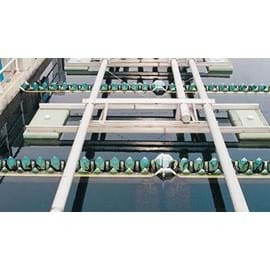With wastewater aeration, substances dissolved in wastewater are brought into contact with air and are removed. In this blog post, we will talk about aeration as a wastewater treatment technique.
What is aeration?
Aeration is the process of contacting a liquid phase with air. In most cases, this happens in the water purification industry. A good example is the use of a turbine aerator. This is a machine that pumps air through the water. Aeration can also be done via sprays, cascades and plate aerators.
How does the aeration technique work?
Aeration makes substances dissolved in water to be brought into contact with air. Water and air have differences in concentration and this means that substances can be introduced in the water. Other purification techniques use the difference in concentration of air and liquid and these techniques are vacuum degassers or vacuum installations. These ensure that vacuum is created and that the solubility of unwanted products is lowered in the water phase. This makes it easier to remove.
Benefits of aeration
Wastewater treatment plants invest a lot of money in wastewater aeration equipment because aeration has numerous benefits. With the aeration technique, air doesn’t need to be bought. This is a natural process that uses natural air that is freely available. Aeration is effective with the correct conditions. Aeration also ensures that water is well mixed because the water is supposed to be homogeneous.
Disadvantages
While wastewater aeration has a lot of benefits, there are also drawbacks that you need to know before adopting the technique. Aeration is expensive since it uses a lot of energy. Higher mechanical stress, clogged pipes and damage to aerators can happen. The process of aeration causes the odour to be emitted to the environment. The air used often needs to be purified and this can be time-consuming and costly.



